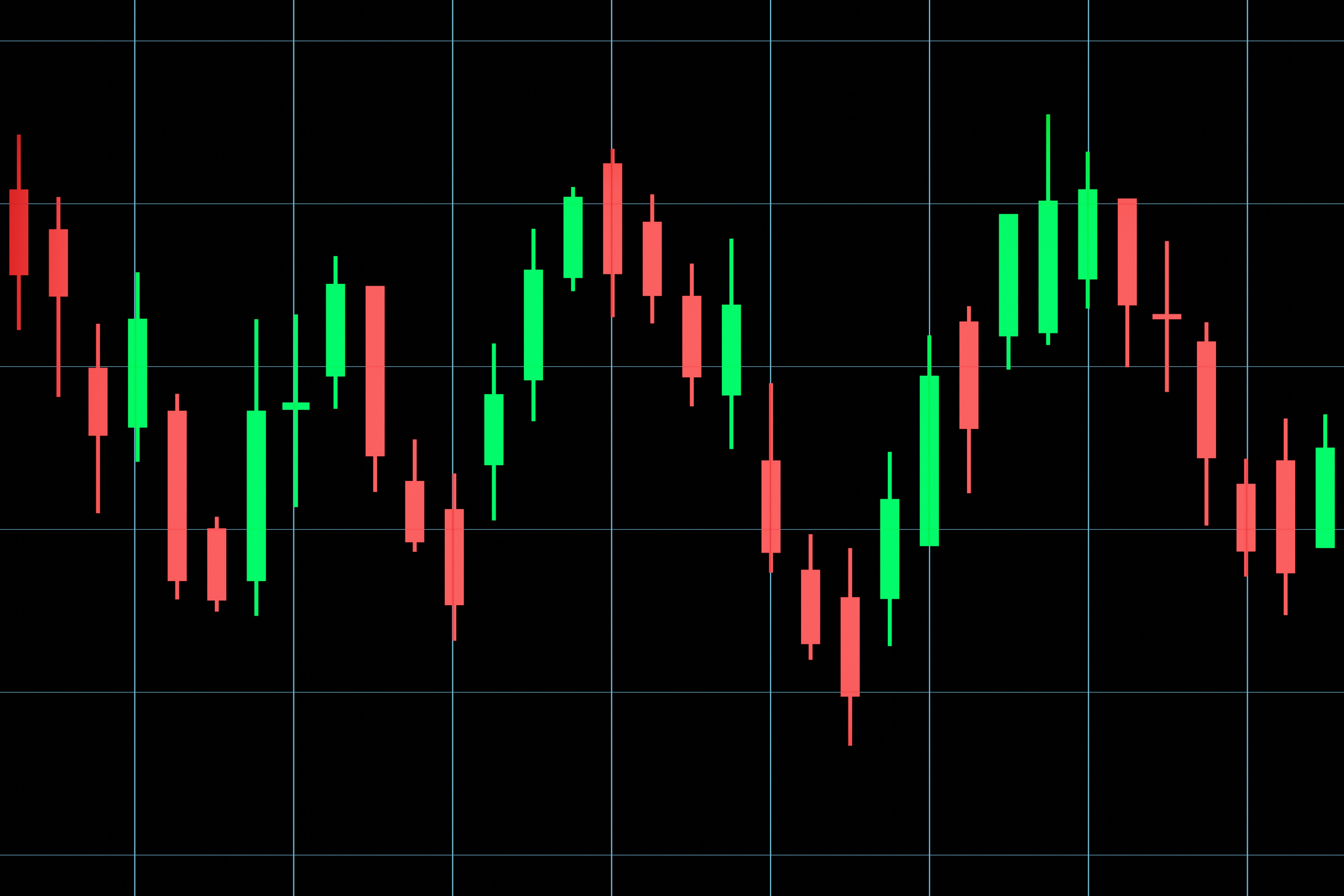Stock Market Today: Stocks Climb More Walls of Worry
Volatility is back in a normal range, and the trend for the main equity indexes remains positive despite specific and general headwinds.



Buyers stepped in after stocks slumped at Thursday's opening bell, but the potential impact of even dramatically reduced tariffs continues to burden markets.
Remarks from the world's most important central banker, as well as earnings and guidance from the world's biggest retailer, reflect lingering uncertainty, with incoming economic data providing little clarity.
In remarks prepared for delivery at the Federal Reserve Board's Thomas Laubach Research Conference, Fed Chair Jerome Powell warned of higher interest rates over the long term and reiterated his concern about new challenges confronting monetary policymakers.
From just $107.88 $24.99 for Kiplinger Personal Finance
Become a smarter, better informed investor. Subscribe from just $107.88 $24.99, plus get up to 4 Special Issues

Sign up for Kiplinger’s Free Newsletters
Profit and prosper with the best of expert advice on investing, taxes, retirement, personal finance and more - straight to your e-mail.
Profit and prosper with the best of expert advice - straight to your e-mail.
"Higher real rates may also reflect the possibility that inflation could be more volatile going forward," Powell said. "We may be entering a period of more frequent, and potentially more persistent, supply shocks — a difficult challenge for the economy and for central banks."
The yield on the 10-year U.S. Treasury note slipped to 4.447% from 4.528% on Wednesday. The so-called "fear gauge" – the Cboe Volatility Index (VIX) – has settled down to 18.05, within its "normal" range of 12 to 20, from a recent intraday high of 60.13 on April 7.
At the closing bell, the blue-chip Dow Jones Industrial Average was up 0.7% to 42,322 and the broad-based S&P 500 Index had added 0.4% to 5,916 but the tech-heavy Nasdaq Composite was lower by 0.2% to 19,112.
Incoming data signals
Before Thursday's opening bell, the Census Bureau said retail sales grew by 0.1% to $724.1 billion in April, below a FactSet-compiled consensus estimate of 0.2% and a slowdown from 1.7% growth in March.
Sales were up 5.2% compared to April 2024.
"This 'control' input for personal consumption expenditures suggests that real consumer spending downshifted further in the second quarter, as sentiment dove as the trade war ramped up," observes BMO Capital Markets Senior Economist Sal Guatieri.
"A subsequent rolling back of some tariffs and rebound in equities should support spending in future months," Guatieri says, "assuming further progress on the trade front."
Meanwhile, the Bureau of Labor Statistics said the Producer Price Index (PPI) declined by 0.5% in April. PPI was unchanged in March after a 0.2% increase in February.
"As with the CPI release, tariffs have yet to make much of a mark on pricing, though it's likely just a matter of time," Guatieri notes.
WMT rises, falls, rises
Walmart (WMT) bounced in the pre-market and traded above $100 after it released fiscal year 2026 first-quarter earnings and guidance, but sank as low as $91.89 within the first 30 minutes of regular trading. By the closing bell, the blue chip stock was down just 0.4% at $96.44.
WMT stock's intraday trajectory largely mirrors the moves of the broader market so far in 2025 as it's adjusted to President Donald Trump's second administration: up before the inauguration, down due to "Liberation Day," back up on relatively good news about tariffs.
Walmart reported earnings of 61 cents per share, better than a consensus forecast of 58 cents. Revenue grew by 2.5% to $165.6 billion, slightly below the Street's forecast. Management said second-quarter sales will rise by 3.5% to 4.5% but refrained from offering income and earnings guidance.
"Given the dynamic nature of the backdrop, and the range of near-term outcomes being exceedingly wide and difficult to predict," explained Chief Financial Officer John David Rainey in the company's earnings release, "we felt it best to hold from providing a specific range of guidance for operating income growth and EPS for the second quarter."
Rainey added that Walmart "can navigate well and achieve [its] full-year guidance" for sales growth of 3% to 4% and EPS of $2.50 to $2.60.
UBS Global Research analyst Michael Lasser says Walmart's results "showed why the stock is well set up to outperform." The retailer "generated robust sales momentum, exceeded its original Q1 EPS guidance, and maintained its full year guide."
Lasser, who rates WMT stock Buy with a 12-month target price of $110, notes that "the attributes of its model are working regardless of the backdrop," highlighting its scale as well as its value-focused approach.
UNH is headed for the hoosegow
UnitedHealth Group (UNH) was once again the worst-performing Dow Jones stock after The Wall Street Journal reported the health insurer is being investigated by the Department of Justice for Medicare fraud.
UNH stock ended the day down 11% after falling as much as 19.2%. The health insurer shed 17.8% on Tuesday following the abrupt resignation of CEO Andrew Witty.
According to the WSJ, "While the exact nature of the potential criminal allegations against UnitedHealth is unclear, the people said the federal investigation is focusing on the company's Medicare Advantage business practices."
UNH is now down nearly 30% so far this week and 40% so far in 2025. Deutsche Bank analyst George Hill reiterated his Buy rating on the stock following Witty's resignation but reduced his 12-month price target from $521 to $362.
The analyst notes that UNH "has now guided down EPS three years in a row, with most of the negative revisions rooted in the Medicare Advantage (MA) business."
Related content
- Is It Time to Invest in Europe?
- Private Markets: Six Things Investors Need to Know
- Best Dividend Stocks to Buy for Dependable Dividend Growth
Profit and prosper with the best of Kiplinger's advice on investing, taxes, retirement, personal finance and much more. Delivered daily. Enter your email in the box and click Sign Me Up.

David Dittman is the former managing editor and chief investment strategist of Utility Forecaster, which was named one of "10 investment newsletters to read besides Buffett's" in 2015. A graduate of the University of California, San Diego, and the Villanova University School of Law, and a former stockbroker, David has been working in financial media for more than 20 years.
-
 Original Medicare vs Medicare Advantage Quiz: Which is Right for You?
Original Medicare vs Medicare Advantage Quiz: Which is Right for You?Quiz Take this quick quiz to discover your "Medicare Personality Type" and learn whether you are a Traditionalist, or a Bundler.
-
 Ask the Editor: Capital Gains and Tax Planning
Ask the Editor: Capital Gains and Tax PlanningAsk the Editor In this week's Ask the Editor Q&A, Joy Taylor answers questions on capital gains tax rates and end-of-year tax planning
-
 Time Is Running Out to Make the Best Tax Moves for 2025
Time Is Running Out to Make the Best Tax Moves for 2025Don't wait until January — investors, including those with a high net worth, can snag big tax savings for 2025 (and 2026) with these strategies.
-
 Time Is Running Out to Make the Best Moves to Save on Your 2025 Taxes
Time Is Running Out to Make the Best Moves to Save on Your 2025 TaxesDon't wait until January — investors, including those with a high net worth, can snag big tax savings for 2025 (and 2026) with these strategies.
-
 4 Smart Ways Retirees Can Give More to Charity, From a Financial Adviser
4 Smart Ways Retirees Can Give More to Charity, From a Financial AdviserFor retirees, tax efficiency and charitable giving should go hand in hand. After all, why not maximize your gifts and minimize the amount that goes to the IRS?
-
 I'm an Insurance Pro: If You Do One Boring Task Before the End of the Year, Make It This One (It Could Save You Thousands)
I'm an Insurance Pro: If You Do One Boring Task Before the End of the Year, Make It This One (It Could Save You Thousands)Who wants to check insurance policies when there's fun to be had? Still, making sure everything is up to date (coverage and deductibles) can save you a ton.
-
 Small Caps Hit a New High on Rate-Cut Hope: Stock Market Today
Small Caps Hit a New High on Rate-Cut Hope: Stock Market TodayOdds for a December rate cut remain high after the latest batch of jobs data, which helped the Russell 2000 outperform today.
-
 What Investors May Face in the New Year: Interview
What Investors May Face in the New Year: InterviewKeith Lerner, the chief market strategist and chief investment officer for Truist Wealth, speaks with Kiplinger.
-
 3 Year-End Tax Strategies for Retirees With $2 Million to $10 Million
3 Year-End Tax Strategies for Retirees With $2 Million to $10 MillionTo avoid the OBBB messing up your whole tax strategy, get your Roth conversions and charitable bunching done by year's end.
-
 'Politics' Is a Dirty Word for Some Financial Advisers: 3 Reasons This Financial Planner Vehemently Disagrees
'Politics' Is a Dirty Word for Some Financial Advisers: 3 Reasons This Financial Planner Vehemently DisagreesYour financial plan should be aligned with your values and your politics. If your adviser refuses to talk about them, it's time to go elsewhere.
-
 For a Move Abroad, Choosing a Fiduciary Financial Planner Who Sees Both Sides of the Border Is Critical
For a Move Abroad, Choosing a Fiduciary Financial Planner Who Sees Both Sides of the Border Is CriticalWorking with a cross-border financial planner is essential to integrate tax, estate and visa considerations and avoid costly, unexpected liabilities.